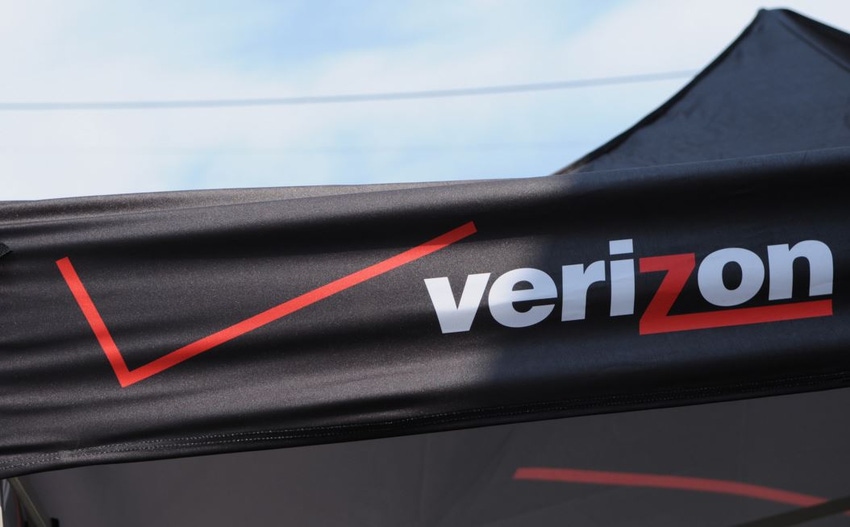Verizon has pledged to spend an additional US$170 million for early access to some of the C-band frequencies it acquired last year.
March 23, 2022

Verizon has pledged to spend an additional US$170 million for early access to some of the C-band frequencies it acquired last year.
That’s no small sum of money but, given that the US telco was by far the biggest spender in the much-hyped $94 billion C-band auction with a bill of almost $53 billion, this latest outlay is something of a drop in the ocean.
That said, the fact that Verizon is willing to add so many tens of millions to its spend serves to further demonstrate how important the C-band frequencies have become to an operator that not so long ago tried to convince us all that mmWave was where it was at for 5G. Now, the telco is throwing everything it has at rolling out 5G in its C-band frequencies as quickly as possible.
US telcos’ use of the C-band airwaves for 5G mobile services requires a handful of incumbent satellite providers to vacate the frequencies first. The first phase of this clearance is already complete, with operators able to use some of their new spectrum from 5 December, although issues with interference with the aviation industry meant AT&T and Verizon were forced to delay their launches into the new year and make concessions on power output.
In phase two, the satellite providers have until 5 December 2023 to free up another swathe of spectrum.
Verizon was fairly vague in its announcement, noting simply that it has entered into agreements with satellite providers for early clearance of C-band spectrum, a move that will enable it to roll out its 5G Ultra Wideband service in more places this year. As a result, it will roll out 5G Ultra Wideband on at least 60 MHz of spectrum – and up to 100 MHz in some areas – to 30 additional markets including big population centres like Atlanta, Baltimore, Washington DC and Denver.
Satellite operator SES provided further detail. It announced a deal with Verizon to provide early access to a portion of the C-band at 3.7 GHz-3.8 GHz earlier than the FCC’s relocation dates. Specifically, it will install filters and other ancillary equipment at about 500 sites in 2022, it said.
The deal will see SES earn up to an additional $170 million from Verizon, “subject to delivering the clearing on a timeline agreed to by the parties,” it said. It’s not all profit for SES though. The company estimates that its clearing costs will go up to around $100 million from $80 million as a result of the agreement.
While it declined to share specifics of the cost of its accelerated clearance arrangements, Verizon is unsurprisingly making a lot of noise about the potential for 5G expansion.
“This early spectrum clearance is just the latest development that allows us to bring 5G Ultra Wideband to our customers faster,” said Kyle Malady, EVP and President of Global Network and Technology at Verizon. “We’ve been able to accelerate deployment because we’re driving more efficiency and coverage from the C-band spectrum, leveraging opportunities like the one we are announcing today, and leveraging our already in place infrastructure.”
Verizon – like rival AT&T – is still playing catch-up with T-Mobile US, but you could be forgiven for forgetting that, given the tone of its announcement…which was probably the intention.
Speaking of T-Mobile, the FCC has now set the date for its next spectrum auction. The regulator’s chair, Jessica Rosenworcel, recently revealed that auction 108, the sale of more 2.5 GHz frequencies, will take place in July, and now we have a precise date: the start of bidding for around 8,000 overlay 2.5 GHz licences will be on 29 July.
Essentially, that auction will sell of chunks of unassigned 2.5 GHz spectrum at a county level, mainly in rural areas. T-Mobile, clearly keen to do some 2.5 GHz infill, has been pushing hard for the regulator to crack on with the auction and will therefore be the one to watch when the sale gets going. The telco is due to update the industry on its 5G endeavours later on Wednesday. The 5G PR machine rumbles on…
About the Author(s)
You May Also Like








.png?width=300&auto=webp&quality=80&disable=upscale)


_1.jpg?width=300&auto=webp&quality=80&disable=upscale)


.png?width=800&auto=webp&quality=80&disable=upscale)